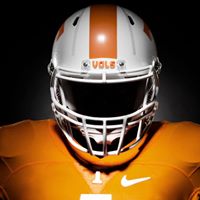William R Plummer
age ~67
from Hampton, VA
William Plummer Phones & Addresses
- 109 Quaker Rd, Hampton, VA 23669
- Yorktown, VA
- Jacksonville, FL
- Middletown, RI
- Wenham, MA
Work
-
Company:U. s. navy - Quantico, VAOct 1998
-
Position:Command master chief
Education
-
School / High School:ECPI University- Newport News, VAJan 2013
-
Specialities:Bachelor of Science in Healthcare Administration
Isbn (Books And Publications)

Buttercups and Strong Boys: A Sojourn at the Golden Gloves
view sourceAuthor
William Plummer
ISBN #
0140088997


Buttercups and Strong Boys: A Sojourn at the Golden Gloves
view sourceAuthor
William Plummer
ISBN #
0670803219

Search for the Seven Cities: The Opening of the American Southwest
view sourceAuthor
William K. Plummer
ISBN #
0152712100

Why Can't You See the Wind: A Beginning Book about the Weather
view sourceAuthor
William K. Plummer
ISBN #
0448036185



Resumes

Contract Specialist
view sourceLocation:
Newport News, VA
Industry:
Defense & Space
Work:
Naval Sea Systems Command (Navsea)
Contract Specialist
Us Navy Dec 1975 - Nov 2000
Command Master Chief
Contract Specialist
Us Navy Dec 1975 - Nov 2000
Command Master Chief
Education:
Ecpi University 2010 - 2013
Bachelors, Bachelor of Science, Healthcare Administration The George Washington University 1997
Bachelors, Bachelor of Science, Health Science
Bachelors, Bachelor of Science, Healthcare Administration The George Washington University 1997
Bachelors, Bachelor of Science, Health Science

Naval Officer At U.s Naval Academy Foundation
view sourceIndustry:
Fund-Raising
Work:
U.S. Naval Academy Foundation
Naval Officer
Naval Officer

William Plummer
view source
William Plummer
view source
William Plummer
view source
Forklift Operator
view sourceWork:
Forklift Operator

William Plummer Hampton, VA
view sourceWork:
U. S. Navy
Quantico, VA
Oct 1998 to Nov 2000
Command Master Chief U. S. Navy
Yorktown, VA
Dec 1995 to Oct 1998
Command Senior Chief U. S. Navy
Dec 1992 to Dec 1995
Senior Squadron Medical Department Representative Active Duty Medicine, Naval Hospital
Newport, RI
Jul 1990 to Dec 1992
Leading Chief Petty Officer Operation Deep Freeze, Antarctica
Newport, RI
Sep 1991 to Feb 1992
Independent Duty Corpsman USS LUCE (DDG-38)
Mayport, FL
Jan 1987 to Jul 1990
Senior Medical Department Representative
Quantico, VA
Oct 1998 to Nov 2000
Command Master Chief U. S. Navy
Yorktown, VA
Dec 1995 to Oct 1998
Command Senior Chief U. S. Navy
Dec 1992 to Dec 1995
Senior Squadron Medical Department Representative Active Duty Medicine, Naval Hospital
Newport, RI
Jul 1990 to Dec 1992
Leading Chief Petty Officer Operation Deep Freeze, Antarctica
Newport, RI
Sep 1991 to Feb 1992
Independent Duty Corpsman USS LUCE (DDG-38)
Mayport, FL
Jan 1987 to Jul 1990
Senior Medical Department Representative
Education:
ECPI University
Newport News, VA
Jan 2013
Bachelor of Science in Healthcare Administration The George Washington University
Washington, DC
1997
Bachelor of Science in Health Science Naval School of Health Sciences
Portsmouth, VA
1982 to 1986
Radiology
Newport News, VA
Jan 2013
Bachelor of Science in Healthcare Administration The George Washington University
Washington, DC
1997
Bachelor of Science in Health Science Naval School of Health Sciences
Portsmouth, VA
1982 to 1986
Radiology

William Plummer
view sourceLocation:
United States
Name / Title
Company / Classification
Phones & Addresses
CFO, Chairman
United Rentals (North America), Inc
Heavy Cnstn Equip Rent · Heavy Construction Equipment Rental · Equipment Rental · Whol Construction/Mining Equipment Equipment Rental/Leasing · Equipment Rental and Leasing, Nec · Equipment Rentals and Sales · Equipment Rental/Leasing · Nonclassifiable Establishments
Heavy Cnstn Equip Rent · Heavy Construction Equipment Rental · Equipment Rental · Whol Construction/Mining Equipment Equipment Rental/Leasing · Equipment Rental and Leasing, Nec · Equipment Rentals and Sales · Equipment Rental/Leasing · Nonclassifiable Establishments
2036223131, 6022678800
CENTER FOR NONPROFIT RESOURCES OF OHIO, INC
Us Patents
-
Method And Apparatus For Encoding And Decoding Information In A Non-Visible Manner
view source -
US Patent:6595427, Jul 22, 2003
-
Filed:Aug 31, 2000
-
Appl. No.:09/652427
-
Inventors:Vivek K. Soni - Lynnfield MA
J. Barry Mahoney - Andover MA
William T. Plummer - Concord MA
Richard G. Egan - Dover MA -
Assignee:Polaroid Corporation - Waltham MA
-
International Classification:G06K 1906
-
US Classification:235491, 235468
-
Abstract:The present invention relates to encoding and decoding of information using materials that are capable of mildly absorbing radiation over a wide range of infrared wavelengths and substantially non-absorbing in the visible wavelengths. Examples of such encoding of information are bar codes and area markings. Information is encoded in markings on a base medium by depositing or intertexturing on the base medium a material where the surface dimensions, thickness and presence of the material contain the encoded information. The encoding, as disclosed in this invention, utilizes a lower cost, more stable material than a material that is capable of highly absorbing over a range of infrared wavelengths and substantially non-absorbing in the visible wavelengths. However, since the material used in this invention is mildly absorbing in the infrared range, the signal obtained by reflecting or transmitting infrared radiation from the markings will be less distinct. Thus, inventive methods are needed to ensure that the encoded information can be decoded.
-
Method And Apparatus For Encoding And Decoding Information In A Non-Visible Manner
view source -
US Patent:6786416, Sep 7, 2004
-
Filed:May 27, 2003
-
Appl. No.:10/445592
-
Inventors:Vivek K. Soni - Lynnfield MA
J. Barry Mahoney - Andover MA
William T. Plummer - Concord MA
Richard G. Egan - Dover MA -
Assignee:Polaroid Corporation - Waltham MA
-
International Classification:G06K 1906
-
US Classification:235491
-
Abstract:The present invention relates to encoding and decoding of information using materials that are mildly absorbing radiation over a wide range of infrared wavelengths and substantially non-absorbing in the visible wavelengths. Examples of such encoding of information are bar codes and area markings. Information is encoded in markings on a base medium by depositing or intertexturing on the base medium a material where the surface dimensions, thickness and presence of the material contain the encoded information. The encoding utilizes a lower cost, more stable material than a material that is highly absorbing over a range of infrared wavelengths and substantially non-absorbing in the visible wavelengths. However, since the material is mildly absorbing in the infrared range, the signal obtained by reflecting or transmitting infrared radiation from the markings will be less distinct. Thus, inventive methods are needed to ensure that the encoded information can be decoded.
-
Method And Apparatus For Encoding And Decoding Information In A Non-Visible Manner
view source -
US Patent:6994257, Feb 7, 2006
-
Filed:May 27, 2003
-
Appl. No.:10/445594
-
Inventors:Vivek K. Soni - Lynnfield MA, US
J. Barry Mahoney - Andover MA, US
William T. Plummer - Concord MA, US
Richard G. Egan - Dover MA, US -
Assignee:Polaroid Corporation - Waltham MA
-
International Classification:G06K 7/10
-
US Classification:235468
-
Abstract:The present invention relates to encoding and decoding of information using materials that are capable of mildly absorbing radiation over a wide range of infrared wavelengths and substantially non-absorbing in the visible wavelengths. Examples of such encoding of information are bar codes and area markings. Information is encoded in markings on a base medium by depositing or intertexturing on the base medium a material where the surface dimensions, thickness and presence of the material contain the encoded information. The encoding, as disclosed in this invention, utilizes a lower cost, more stable material than a material that is capable of highly absorbing over a range of infrared wavelengths and substantially non-absorbing in the visible wavelengths. However, since the material used in this invention is mildly absorbing in the infrared range, the signal obtained by reflecting or transmitting infrared radiation from the markings will be less distinct. Thus, inventive methods are needed to ensure that the encoded information can be decoded.
-
Camera For Photographing Scale Models
view source -
US Patent:44987480, Feb 12, 1985
-
Filed:Dec 3, 1982
-
Appl. No.:6/446598
-
Inventors:Peter W. J. Jones - Belmont MA
William T. Plummer - Concord MA
Dennis W. Purcell - Medford MA -
Assignee:Polaroid Corporation - Cambridge MA
-
International Classification:G03B 1748
-
US Classification:354 79
-
Abstract:A camera for photographing architectural scale models and the like to obtain photographs having natural full-scale perspective. The camera includes a film back adapted to receive panchromatic, preferably, self-processable type film. From the film back extends a relatively long body which tapers rather sharply from the film back to a narrow pedestal-like base upon which the camera stands and which allows easy access to model features. An optical system resides in the base and includes a long focal length positive lens and pinhole adapted to the long tapered body and an afocal, simple reversed Galilean telescope which serves to establish the camera field of view. Chromatic aberrations which might otherwise cause multiple images due to the long camera optical path are eliminated by appropriate filtering.
-
Imaging Medium With Low Refractive Index Layer
view source -
US Patent:51769727, Jan 5, 1993
-
Filed:Sep 11, 1991
-
Appl. No.:7/757910
-
Inventors:Iris B. K. Bloom - Waltham MA
Richard A. Minns - Arlington MA
William T. Plummer - Concord MA -
Assignee:Polaroid Corporation - Cambridge MA
-
International Classification:G03C 554
G03C 180 -
US Classification:430 14
-
Abstract:An imaging medium comprises means for providing a light-reflecting layer, an image-receiving layer for receiving image-forming components, a transparent layer superposed over the image-receiving layer such that an image in the image-receiving layer can be viewed through the transparent layer against the light-reflecting layer, and an image enhancement layer disposed between the image-receiving layer and the transparent layer, the image enhancement layer having a refractive index less than that of the transparent layer and the image-receiving layer and not greater than about 1. 43. The image enhancement layer decreases internal reflections within the medium and thereby improves the quality of the image seen. The imaging medium can be used as the imaging element of a diffusion transfer process film unit.
-
Variable Focus Optical System
view source -
US Patent:60668571, May 23, 2000
-
Filed:Sep 11, 1998
-
Appl. No.:9/151496
-
Inventors:Stephen D. Fantone - Lynnfield MA
Luis A. Figarella - Nashua NH
David A Imrie - Woburn MA
Harry McKinley - Southampton MA
William T. Plummer - Concord MA
Howard Stern - Greenlawn NY
Jon E. Van Tassell - Winthrop MA -
Assignee:Robotic Vision Systems, Inc. - Canton MA
-
International Classification:G02B 704
G06K 710 -
US Classification:250566
-
Abstract:A focusable imaging system particularly suitable for use in acquiring digital images for subsequent processing such as in a hand held, omnidirectional symbology or bar code reader by which linear and two dimensional (matrix, maxi-code) bar codes may be imaged over relatively long working distances. The imaging system includes an focusing objective taking lens and a two-dimensional photodetector that operate to form an image of an object such as a bar code in X and Y directions simultaneously and generate an electrical signal representative of the object or code for subsequent downstream processing by which information embedded in the object or bar code may be extracted. Focusing is achieved via a rotating disk that carries a plurality of optical shims or other light controlling surfaces to provide for different focus zones. A through-the-lens (TTL) targeting system is provided to visually assist the user in positioning the reader for a variety of code modalities to assure that a bar code or the like will be captured within the field of view and be sharply imaged on the photodetector when the lens is focused. Two different forms of artificial illumination are provided to accommodate nearby objects or codes that may be either specular or partially diffuse and more distant objects or codes where the reflection characteristics have less impact on image contrast.
-
Special Optical Element For Camera To Microscope Adaptor
view source -
US Patent:39763684, Aug 24, 1976
-
Filed:Dec 4, 1974
-
Appl. No.:5/529407
-
Inventors:Mary Conlin McCann - Belmont MA
William T. Plummer - Concord MA
Vivian K. Walworth - Concord MA -
Assignee:Polaroid Corporation - Cambridge MA
-
International Classification:G02B 504
G02B 718 -
US Classification:350286
-
Abstract:The invention is an optical element, one version of which is useful for operating an automatic exposure control of a self-contained camera coupled to a microscope without detracting from the brightness of the magnified image to be recorded on the camera's film format. The article includes three reflecting surfaces arranged to extract a small part of the light emerging from the microscope's eyepiece and direct it into the photodetector of the automatic exposure control. A lensrefracts the light, after the third reflection, to improve the distribution of the light onto the camera's photodetector. The article is suitable for manufacture as a homogeneous molding of transparent plastic.
-
Zone Focusing Optical System
view source -
US Patent:44430671, Apr 17, 1984
-
Filed:Mar 23, 1981
-
Appl. No.:6/246224
-
Inventors:R. Calvin Owen - Lincoln MA
William T. Plummer - Concord MA -
Assignee:Polaroid Corporation - Cambridge MA
-
International Classification:G02B 904
G02B 906
G02B 1318
G02B 1502 -
US Classification:350422
-
Abstract:A zone focusing lens system is provided for use as a photographic camera objective. In the system, a fixed positive meniscus is placed ahead of the system aperture stop and is provided with an aspheric surface that is structured primarily to correct for off-axis aberrations. A lens disk having a plurality of different meniscus lens elements is located so that each of its elements can be selectively rotated into alignment proximate the system aperture stop to provide system focal lengths appropriate for sharply focusing objects located within different distance ranges. Each of the lens disk elements is provided with an aspheric surface that is structured primarily to reduce spherical aberrations.

William Plummer
view source
William Jake Plummer
view source
Canaan William Plummer
view source
William Plummer Jr.
view source
William J Plummer
view source
William R. Plummer
view source
William C Plummer
view source
William A. Plummer
view sourceMyspace
Googleplus

William Plummer
Lived:
Los Angeles, CA
Providence, RI
Okinawa, Korea, Philippines, Germany, South Carolina, Las Vegas, Phoenix, Sacramento
Providence, RI
Okinawa, Korea, Philippines, Germany, South Carolina, Las Vegas, Phoenix, Sacramento
Work:
Freedom Services - Real Estate
US Air Force
US Air Force
Education:
Providence College, Rensselaer Polytechnic Institute, University of the Philippines
About:
I grew up in Rhode Island. After graduating from Providence College, I spent 20 years in the US Air Force flying the F-4 Phantom and related positions. 11 of those years were in Asia; 4 were in Germ...

William Plummer
Education:
University of California, Irvine - Computer Science
About:
Student at UC Irvine, interested in Linguistics and Programming.

William Plummer

William Plummer

William Plummer

William Plummer

William Plummer

William Plummer
Flickr
Youtube
Classmates

William Plummer
view sourceSchools:
Blessed Sacrament School Denver CO 1980-1984
Community:
Kathy Malloy, John Mohler, Richard Michel, T Honeycutt

William Kiste (Plummer)
view sourceSchools:
Reynolds High School Reynolds IN 1957-1961, Oregon-Davis Junior Senior High School Hamlet IN 1977-1978
Community:
Helen Felix

William Plummer
view sourceSchools:
St. Stephen's & St. Agnes School (Upper School) Alexandria VA 1974-1978
Community:
John Pearson, David Reese, Linda Bauknight, Valerie Shulin, John Ford

William Burggraf (Plummer)
view sourceSchools:
Hereford High School Parkton MD 1984-1988
Community:
Jackie May

William Plummer
view sourceSchools:
Rio Vista Middle School Rio Vista TX 1980-1984
Community:
Laura Lowery, Lisa Phipps, Lanna Edmonds, Ruth Gutierrez, Sarah Loyd

William Plummer
view sourceSchools:
Reston Collegiate High School Reston Palestinian Territory, Occupie 1983-1987
Community:
Bob Walker, Vaughn Bender, Margaret Ray, Thelma Sutcliffe

William Plummer
view sourceSchools:
Pinckney High School Pinckney MI 1971-1975
Community:
Danny Walters, Steve Decker, Michael Cherry, Brian Adams, Chris Dinkel, Allen Evans

William Plummer
view sourceSchools:
Faith Academy Bessemer AL 1969-1973
Community:
Kin Crawford, James Maxwell
Plaxo

William Plummer
view sourceGet Report for William R Plummer from Hampton, VA, age ~67

















